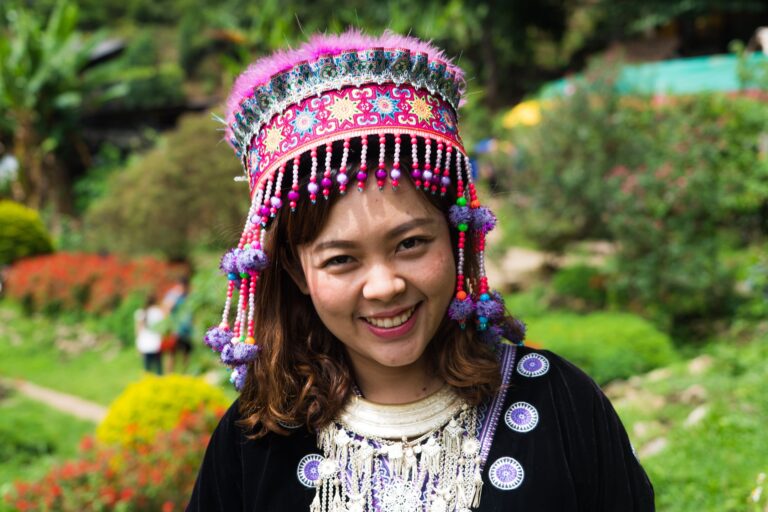
Cultural Insights: Hill Tribes of Thailand
Visitors to Thailand, especially the northern region of Chiang Mai, will often see references to the hill tribes of Thailand. This may be through excursions advertising experiences with the hill tribes, seeing hill tribe traditional dress in souvenir shops, or through references to these peoples in the local museums. But who are the hill tribes? It feels like this is a catch-all term that doesn’t really explain their story and cultural significance.
Let’s take a closer look at who makes up the Thailand hill tribes.
Hill Tribes of Thailand
Ethnic minority groups from the surrounding countries – Laos, Myanmar, and China further north – settled in mountainous northern Thailand over hundreds of years. They settled in rural, remote, hilly regions, keeping their traditions and culture distinct from the local Thai people of the Lanna kingdom – the ancient name for this region of Thailand. So, the moniker ‘hilltribe’ comes from the idea that these were mountainous people, tribal in that they kept separate from the indigenous Thai.
Traditionally, these groups were subsistence farmers, practising slash and burn farming methods, left mainly to their own devices by the Thai government. However, the modern history of the hill tribes is one of attempted integration into society alongside moves to preserve their cultural heritage.
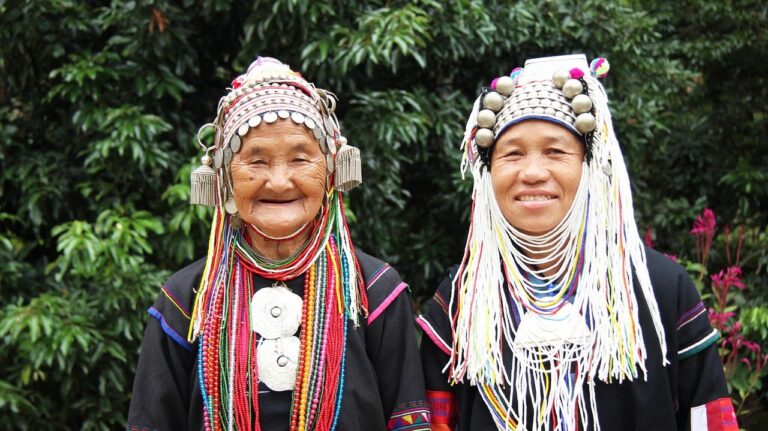
The Royal King’s Agricultural Project was initiated in the 1960s – a substantial nationwide project to promote sustainable farming practices with government subsidies – its work continues to this day. Part of its mission statement was to steer the hill tribes away from the opium-growing prevalent among some communities.
In northern Thailand, these communities are now associated with organic farming of cash crops such as coffee and strawberries – the project is held in high regard globally as an example of an effective programme for eradicating opium growth.
Alongside this organisation, the National Committee of Hill Tribes has worked to establish protected status for these groups – working to preserve their culture while also pursuing a policy of integration. However, this is not without controversy, as many hill tribes are in disputes over land ownership and citizens’ rights issues.
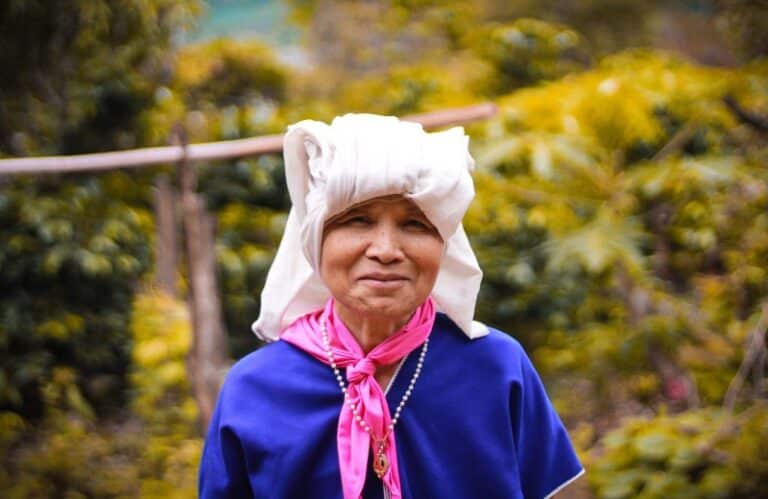
The Hill Tribe Groups
There are 5 main groups of ethnic minorities, the hill tribes, in Thailand, each with their own distinctive culture. These are the Lisu, Karen, Hmong, Akha and Lahu.
Lisu
The Lisu people supposedly originate from Tibet – they made their way into Thailand through the common migratory path through southern China. Today, Lisu can be found in China, Thailand, India, and Myanmar.
The Lisu are split into two subgroups – the flowery and the black Lisu. Most of those in Thailand are the flowery Lisu. The women dress in multi-coloured knee-length tunics of red, blue or green with wide black or silver belts, whereas the men wear baggy pants with shirts made of felt. Having silver buttons, the more the better, is a matter of pride for the men.
Having no written language of their own, Christian missionaries worked alongside the tribe to transliterate and romanise their alphabet. As a result of this cooperation, many Lisu are converted Christians today.
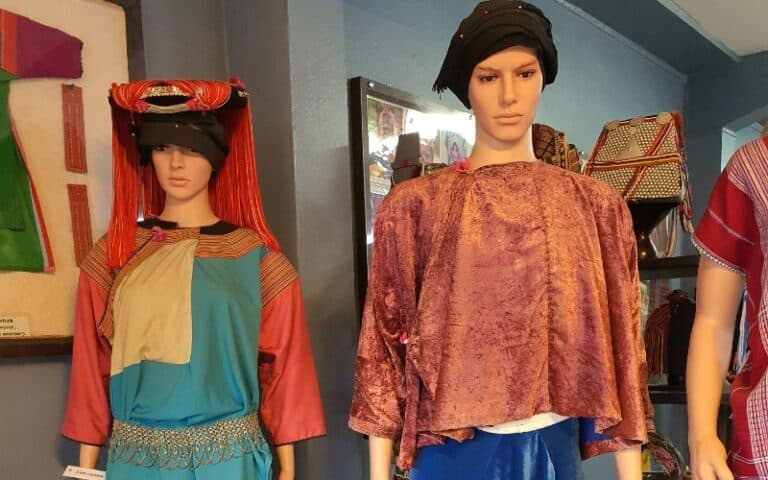
Karen
The Karen people were originally from Myanmar and cover a broad collection of groups with unique identities. In northern Thailand, around 1,000,000 Karen community members cover a wide area – Karen villages can be found in almost every province and district around Chiang Mai and Chiang Rai.
There are four major types of Karen to be found in Thailand, known as; Sgaw (White Karen), Po (Red Karen), Pa-O and the Kayah. Within the red Karen, there is another subgroup of people often dubbed ‘longneck Karen’ due to the practice of wearing multiple brass coils around their necks.
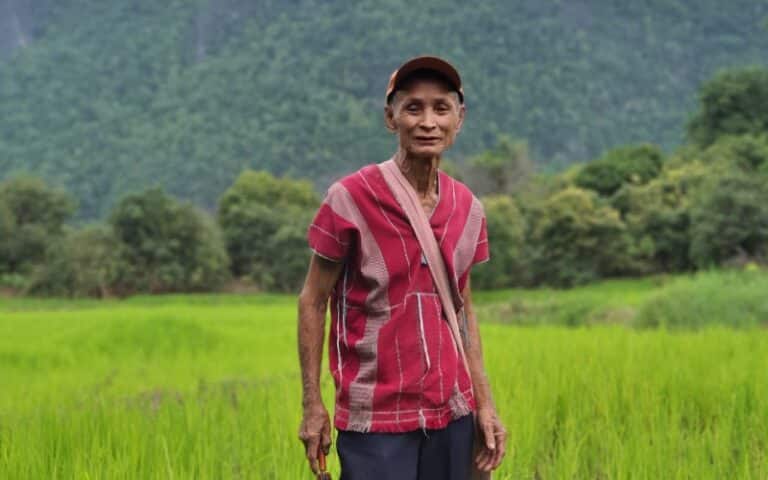
Hmong
Behind the Karen, the Hmong are the second largest hill tribe in terms of population in northern Thailand. The group is known for its colourful and elaborate embroidery techniques and its work with hemp textiles. The Hmong also have a reputation for being the most commercially savvy of the hill tribes and have managed to market themselves well to tourists.
Hmong villages can often be immediately recognised as different from other tribal villages since they prefer to live in ground-level wooden houses – most other tribes live in raised stilted bamboo houses. This may be due to the Hmong’s origination in Central China, where temperatures are typically cooler.
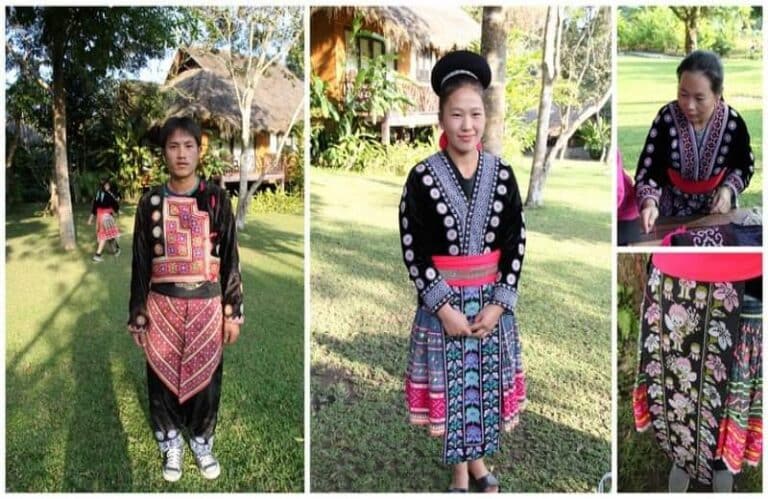
Akha
The Akha are a subgroup of the Hani people of Yunnan, China, and there are about 80,000 living in Thailand. Females wear an elaborative headdress made with silver or white beads and silver coins.
Like all the hill tribes, animism plays a large part in Akha religious life. A unique aspect of Akha villages is the gates that demarcate the border between the spirit world and the physical world. These sacred gates are an indication of the broader belief in the prevalence of spirits – good and bad – that need to be appeased to live a good life.
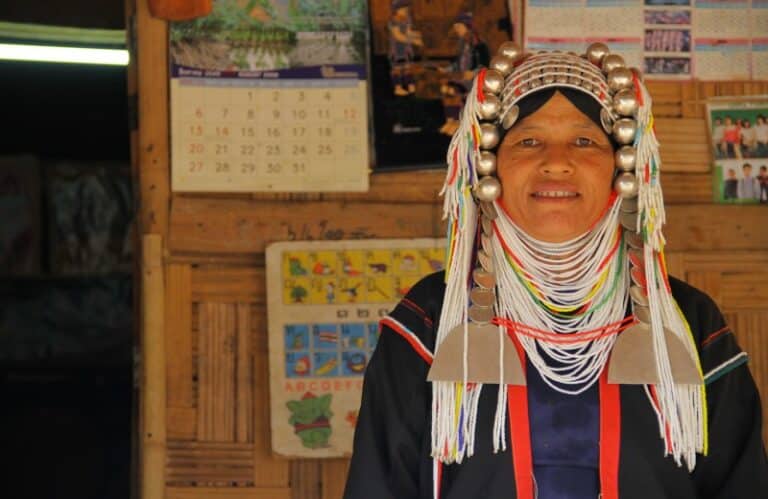
Lahu
The Lahu hill tribe are also known as the “Muser” in Burmese, meaning hunter, due to their traditionally exemplary hunting skills. Much like the other hill tribes on this list, the Lahu fall under different subgroups, noted by colour due to the slight differences in dress from village to village.
The Lahu, like other groups on the list, originate from Yunnan, China. They were originally nomadic and regularly practised slash and burn agriculture before being encouraged by local authorities to engage in settled agriculture.

Common Threads
Labelling these groups ‘hill tribes of Thailand’ is not entirely accurate. As we have seen, these groups mainly originate from China further north and, in fact, constitute a kind of diaspora across Southeast Asia. Karen people, for instance, can be found in Vietnam, Laos, Thailand, Myanmar, and China. Other groups have a similar widespread impact.
Nevertheless, a few common threads lend credence to the concept of collectivising these ethnic minorities into one group.
All have a deep-rooted belief in the spirit world and practice animism, delivering offerings to ensure the benevolence of spirits. Buddhist or Christian beliefs tend to coexist with this. In Thailand, the hill tribes are all associated with various expert handicraft-making – exquisitely woven fabrics are a popular souvenir choice for visitors.
The status of their languages -each idiosyncratic in their own way – is also a uniting factor. It is difficult to preserve these people’s history, stories, and culture with no written documentation.
Yet, while there are common threads, it is important to value each community’s unique culture.
Ethical Concerns
Visiting hill tribes in northern Thailand can be a controversial topic. There are issues related to exploitation that need to be explored. There are concerns related to overtourism and the negative influence of westerners on hill tribe villages. Some groups may be getting exploited by tour operators looking to profit from their popularity with visitors.
That being said, that does not mean that a visit to spend some time will these groups is off-limits to the thoughtful traveller – just that a little research is required.
With Discova, any trekking trips and homestays that allow travellers to spend time with these minority groups are ethical and allow for meaningful interactions without supporting bad practices.
To find out about our tours in northern Thailand, and to hear more about the hill tribes themselves, don’t hesitate to get in touch with our friendly team, who will be happy to tell you more.

